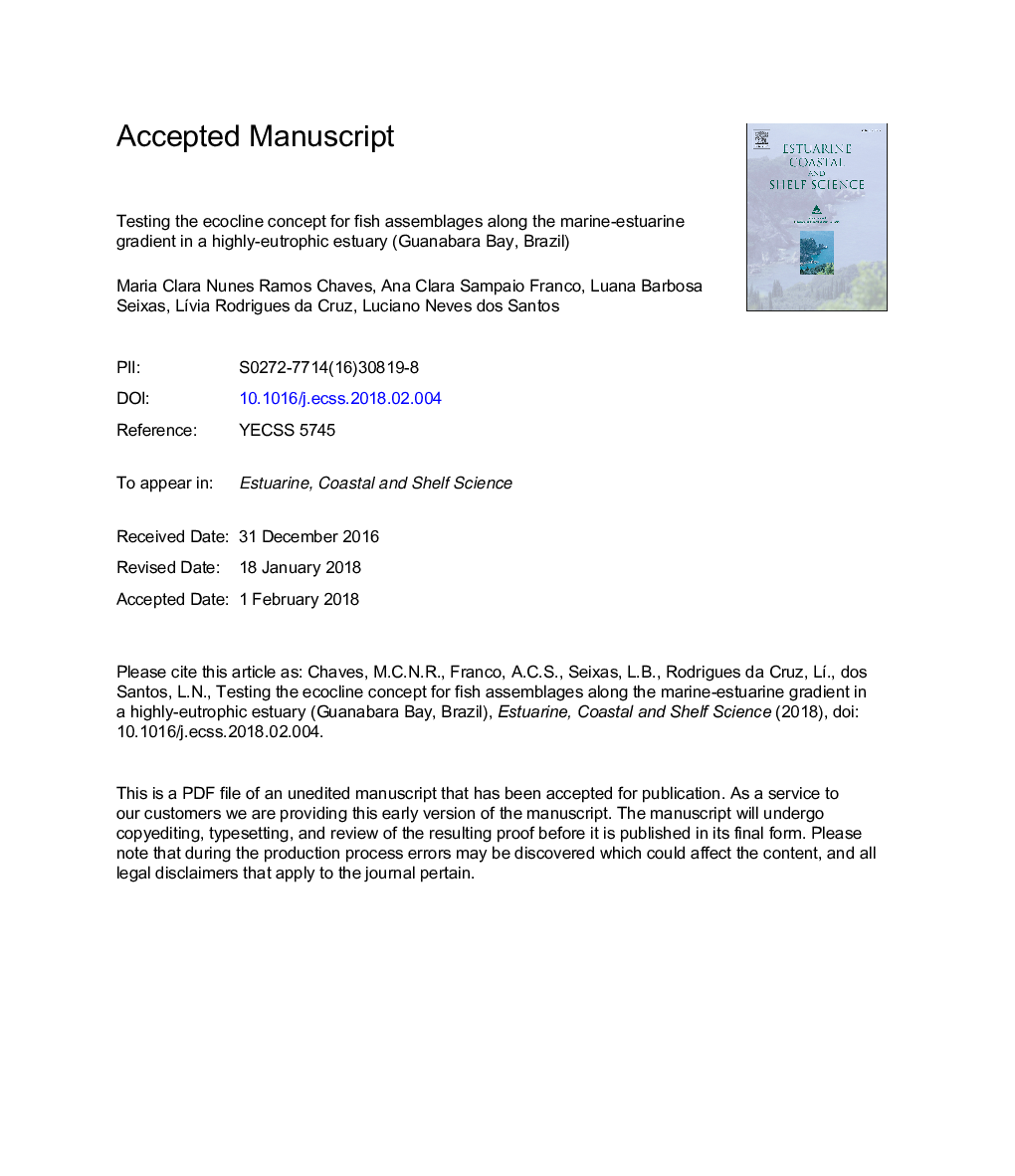| Article ID | Journal | Published Year | Pages | File Type |
|---|---|---|---|---|
| 10223839 | Estuarine, Coastal and Shelf Science | 2018 | 37 Pages |
Abstract
This study addressed whether species composition and structure, and functional guilds of the fish assemblages associated with rocky substrates changed gradually with the marine-estuarine gradient in Guanabara Bay, following thus the predictions for the ecocline gradient. Fish were sampled quarterly with bottom gillnet sets between September 2010 and December 2011 in four locations of Guanabara Bay, with physical and chemical water variables being concurrently measured during fish surveys. PCA corroborated the marine-estuarine gradient between the mouth of the bay (more saline, transparent and oxygenated waters) and the innermost and more estuarine areas (high temperature, and low oxygen and salinity). Most fish metrics, especially richness, Shannon diversity, and functional guilds mirroring the degree of estuary dependence, supported the hypothesis that the ecocline concept still can be applied to explain fish distribution in this highly-eutrophic bay. The upper estuary was intensively used by young stages of the diadromous species targeted by local fisheries, but least used by marine migrants and stragglers. The sites situated near the central portion of the bay shared many species with the upper and lower estuary, probably functioning as ecological corridors for fish dispersal. Our findings supported that shifts in the composition and structure of fish assemblages in Guanabara Bay comply with the ecocline concept, urging special attention to that measures toward environmental rehabilitation and further long-term assessments should be carried out to preserve the role of this complex ecosystem as breeding, nursery, and feeding site.
Related Topics
Physical Sciences and Engineering
Earth and Planetary Sciences
Geology
Authors
Maria Clara Nunes Ramos Chaves, Ana Clara Sampaio Franco, Luana Barbosa Seixas, LÃvia Rodrigues da Cruz, Luciano Neves dos Santos,
